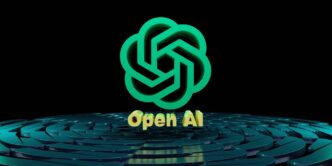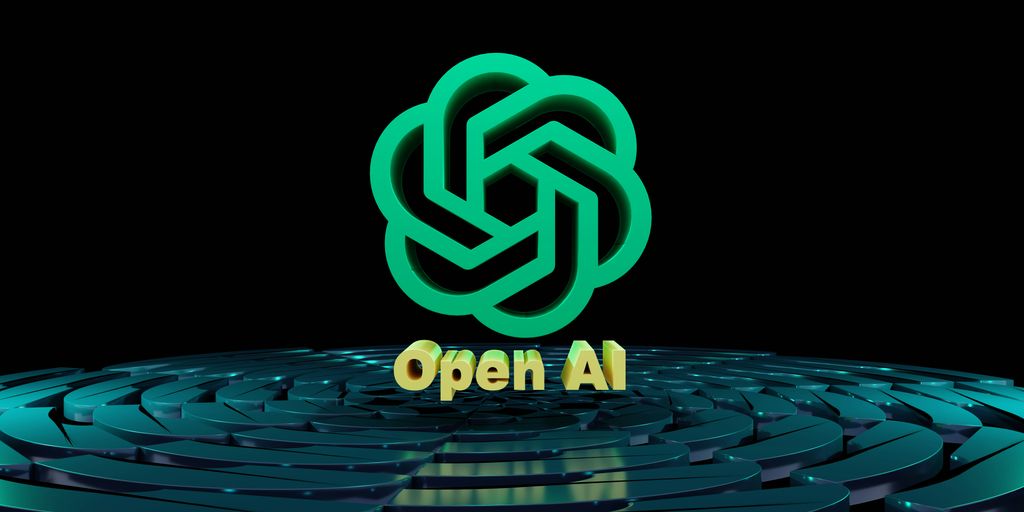Big news is dropping in the AI world, and it’s all about OpenAI. There’s a lot of buzz around their next big model, GPT-5, with rumors flying about what it can do. People are talking about everything from it being a better coder to how it might feel more like talking to a real person. Plus, there’s talk of different versions for different jobs. This could really change how we use AI day-to-day. We’re looking at what might be coming, what rivals are doing, and what people are saying about it so far.
Key Takeaways
- GPT-5 is expected to unify OpenAI’s current models into a single, more capable system that adapts to user needs.
- Rumors suggest GPT-5 will have enhanced ‘agentic’ capabilities, allowing it to think more deeply and act more autonomously.
- Significant improvements in code generation are anticipated, with the potential for GPT-5 to build full applications from simple prompts.
- The new model might offer a more human-like interaction, improving tone, nuance, and conversational flow.
- Leaked information points to different GPT-5 variants (like Mini and Nano), indicating a move towards modular AI for diverse applications and performance needs.
GPT-5 Rumors: What To Expect From OpenAI’s Next Model
OpenAI is keeping things pretty quiet about GPT-5, as usual. But that hasn’t stopped people from speculating wildly about what’s coming. Based on what we’ve seen from subtle updates and comments from folks like Sam Altman, it looks like GPT-5 might be a pretty big leap forward. It’s not just about being a better chatbot; it seems like they’re aiming for something more integrated and capable.
Unified Model Architecture
One of the big theories is that OpenAI might combine several of its current models, like GPT-4, GPT-4 Turbo, and GPT-4o, into a single, more powerful default model. The idea here is that you wouldn’t need to switch between different versions for different tasks. Instead, one model would intelligently adapt to whatever you throw at it. This could simplify how we use AI tools quite a bit.
Enhanced Agentic Capabilities
There’s a lot of talk about GPT-5 becoming more "agentic." This basically means it could get better at thinking things through before it answers. Imagine an AI that pauses, considers different angles, and then gives you a more reasoned response. This could lead to fewer factual errors, better problem-solving, and generally more thoughtful interactions. It’s like giving the AI a bit more time to ponder.
Accelerated Code Generation
For developers, the word on the street is that GPT-5 could seriously speed up code writing. Some insiders are suggesting it might be able to build entire applications or APIs with just a few instructions. We’re not just talking about copy-pasting snippets anymore; it could be about generating functional software from the ground up. This could really change how software is made.
More Human-Like Interaction
This is a bit harder to pin down, but it’s a recurring theme. Early testers are saying that GPT-5 just feels more natural to talk to. It might be about understanding tone, nuance, and even the rhythm of conversation better. The goal seems to be making interactions feel less like talking to a machine and more like chatting with a person. It’s a subtle but important difference for everyday use. OpenAI is already working on future models, with GPT-6 reportedly in development, aiming for even shorter development cycles than GPT-5 [0bef].
The AI Arms Race: GPT-5’s Competitive Edge

It feels like every week there’s a new AI model announcement, and the competition is really heating up. OpenAI’s GPT-5 is definitely a big player in this ongoing AI arms race. While rivals like Google with Gemini and Anthropic with Claude are putting out some impressive stuff, GPT-5 seems to be aiming for a blend of speed, accuracy, and safety that could set it apart. Think of it as trying to do everything well, rather than just one thing. It’s rumored to be better at coding, giving health advice, and just generally understanding what you’re saying, all without needing to switch between different specialized models. That’s a pretty big deal if it works as advertised.
Rivals Keeping Pace with OpenAI
It’s not like OpenAI is the only one moving fast. Google’s Gemini 1.5 Pro, for example, still boasts a massive context window, which is great for processing huge amounts of information. Anthropic’s Claude 3.5 Sonnet has also impressed people with its coding and analysis skills. Even smaller players are making waves; Mistral AI has models that perform almost as well as the big guys but are much smaller and cheaper to run. It’s a constant back-and-forth, with everyone trying to outdo each other.
GPT-5’s Blended Strengths
What’s interesting about GPT-5 is this idea of a unified model. Instead of picking between different versions for different tasks, GPT-5 is supposed to handle it all. This means it could be faster and more accurate across the board, whether you’re writing an email, debugging code, or even asking for health information. They’re also talking about a new "safe completions" feature. This is supposed to mean the AI tries to give you a helpful answer, even if it’s a bit sensitive, and explains why it can’t do something instead of just shutting down. This could make interacting with AI feel a lot more natural and trustworthy.
Context Window and Reasoning Advantages
While Google’s Gemini might have a larger raw context window, GPT-5 is rumored to have a strong 256K context window combined with better reasoning abilities. This means it might not just remember more, but also understand and connect information more effectively. OpenAI is also reportedly improving its developer tools, like making it easier to connect AI to other software. This kind of stuff might not grab headlines like a new model name, but it’s what makes the AI actually useful in real-world applications. We’re seeing a lot of focus on making these tools more practical, which is good news for anyone who uses AI tools regularly.
GPT-5 Launch Excitement and Early Impressions
Anticipation for a Technological Revolution
The buzz around GPT-5 is pretty wild, honestly. It feels like everyone in tech, and even people who aren’t usually into AI, are talking about it. It’s being treated like this huge leap forward, almost like a whole new era for artificial intelligence is about to start. People are expecting it to be faster, way more accurate, and hopefully, less prone to making things up. Some whispers suggest it might even be able to build complete applications just from a simple instruction. It’s a lot to take in, but if even half of these rumors are true, it could really change how we use AI every day.
Sam Altman’s Cryptic Teasers
Sam Altman, you know, the head honcho at OpenAI, has been dropping some pretty mysterious hints. He posted something on X that looked like "LIVE5TREAM THURSDAY 10 AM PT," but with the ‘S’ in ‘Livestream’ swapped for a ‘5’. It’s like he’s trying to build up the suspense. He also made a comparison about using GPT-5 and then going back to GPT-4, saying it was like switching from a sharp, clear screen to a really blurry one. That really sets the expectation that this new model is a big deal, a real step up from what we have now.
Early Tester Feedback on Performance
From what early testers are saying, GPT-5 is supposed to feel like a significant upgrade. Some people who got to try it out early are reporting that it’s much better at coding, solving problems, and even acting more independently, like it can think through tasks on its own. However, a few folks mentioned that while it’s good, the jump might not feel like a complete revolution compared to previous updates. It’s more like a really solid improvement. There’s also been some chatter that the responses might feel a bit less warm than GPT-4o, which is interesting to hear, especially when you’re expecting something more human-like. It’s a mixed bag of impressions, but the overall feeling is that it’s definitely a step forward. We’ll have to see how it all shakes out when it’s more widely available, but for now, the anticipation is definitely high. You can check out some of the initial reactions to GPT-5’s performance online.
GPT-5: Beyond Smarter Chat

It looks like GPT-5 is shaping up to be way more than just another chatbot upgrade. We’re talking about a tool that could genuinely work alongside us, almost like a digital colleague. While previous models were great for writing or finding information, GPT-5 seems set to become a partner in all sorts of tasks.
AI as a Co-Worker
Imagine having an AI that can help you brainstorm ideas, draft reports, and even manage your schedule. GPT-5 is rumored to be able to act as a true collaborator, assisting with complex projects and making your workday smoother. This shift from a simple tool to a working partner is a big deal.
Streamlining App and Website Development
One of the most exciting possibilities is how GPT-5 might change how we build things online. Reports suggest it could help users create entire websites or apps with just a few instructions. This means less time spent on coding and debugging, and more time focusing on the creative side of development. It could really speed up how quickly new digital products get made.
Reliable Health Guidance
While it’s important to remember that AI shouldn’t replace medical professionals, GPT-5 is expected to offer more dependable advice for health-related questions. Think of it as a way to better understand your medical information, prepare questions for your doctor, or compare different treatment options based on your specific needs. It could make navigating healthcare information a bit less confusing.
Seamless Integration into Daily Life
Beyond work and health, GPT-5 is also expected to fit more naturally into our everyday routines. It might help you figure out the best time to schedule appointments by looking at your calendar, help organize your to-do lists, or guide you through multi-step processes without needing constant prompting. It’s about making technology feel less like a separate task and more like a helpful part of your life.
Leaked GPT-5 Variants and Modular AI
There’s been a lot of talk, and some pretty interesting leaks, about different versions of GPT-5. It looks like OpenAI is planning a whole family of models, not just one big one. Think of it like this: you’ll have a standard GPT-5, but also smaller, lighter versions like GPT-5 Mini and even GPT-5 Nano. This makes sense, right? You wouldn’t use the same massive AI for your phone that you’d use for a big company’s data analysis. It’s all about having the right tool for the job.
What’s really catching people’s attention, though, is the idea of "agentic" capabilities. This basically means the AI can take more initiative. Instead of you telling it every single step, you might just give it a goal, like "build me a basic website," and it figures out the steps itself. This could totally change how we work, making AI more like a partner that can handle tasks autonomously. It’s a big step towards AI that doesn’t just respond, but actively helps get things done. This modular approach and the push for more independent AI agents could really speed up how we build apps and automate tasks. It’s exciting to think about what this means for productivity, and it’s definitely something to keep an eye on as we learn more about GPT-5’s capabilities.
Key Upgrades in the GPT-5 Release
OpenAI’s GPT-5 is shaping up to be a pretty big deal, not just a small tweak from the last version. Think of it less like a software update and more like a whole new operating system for AI. They’re really focusing on making it smarter, safer, and easier to use across the board. It feels like a real step forward, and honestly, it’s making the previous models feel a bit dated by comparison. Sam Altman even compared going back to GPT-4 after using GPT-5 to switching from a sharp Retina display to a blurry, pixelated screen – that’s how big of a difference people are reporting.
Smarter Reasoning and Reduced Hallucinations
One of the biggest complaints about AI models has always been their tendency to just make stuff up, or
Navigating the GPT-5 Rollout
So, you’re probably wondering how you’ll actually get your hands on GPT-5 and what that looks like. OpenAI has made it pretty clear that this isn’t going to be a limited beta situation for too long. They’re aiming to roll it out to everyone, including those who use the free version of ChatGPT. This is a pretty big deal, actually, because it means more people get to try out the latest AI advancements without needing a subscription.
Here’s a quick rundown of what to expect:
- Wider Availability: Expect GPT-5 to be accessible across different user tiers, with free users getting access, though possibly with some limits initially. This is a change from previous models where advanced features were often behind a paywall.
- Usage Limits: While it’s available to more people, there might be caps on how much you can use it, especially for free users. Think of it like a data plan – you get a certain amount, and then you might have to wait or upgrade.
- Trying New Features: OpenAI usually rolls out new capabilities gradually. Keep an eye out for announcements about specific features being tested or made available first to certain groups. Being an early adopter can give you a peek at what’s coming next.
The goal is to make this powerful tool available to as many people as possible, as quickly as possible. It’s a big step towards making advanced AI more mainstream. You can check out the official OpenAI launch announcement for the latest details on availability and rollout phases.
What’s Next for AI Assistants?
So, it looks like GPT-5 is finally here, and it’s a pretty big deal. OpenAI seems to be aiming for a more unified, capable AI that can handle a lot more, from writing code to helping with health questions. The idea of a single model that just adapts to what you need, instead of switching between different versions, sounds pretty good. Plus, the talk about it being more ‘agentic’ and understanding nuance better could make interacting with AI feel a lot more natural. We’ll have to see how it all plays out, but it definitely feels like we’re moving towards AI that’s more like a helpful partner than just a tool. It’s going to be interesting to watch how other companies keep up and what this means for how we all use technology day-to-day.












